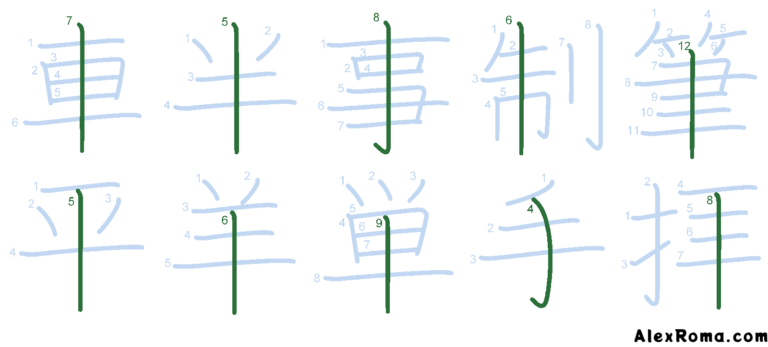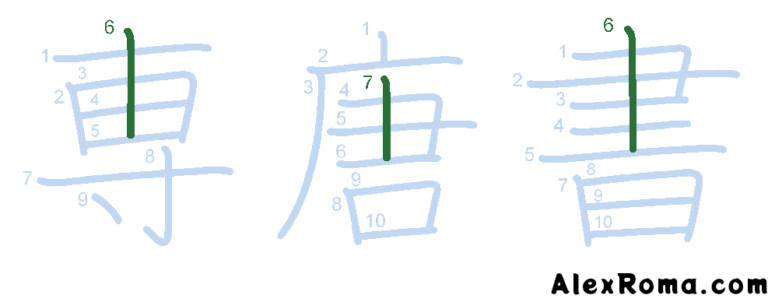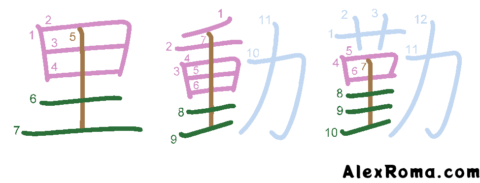Stroke order rule 7 – vertical skewer last
A vertical stroke that pierces a whole shape is written last.
Unlike rule 6, the stroke doesn’t have to protrude from both sides. We have three possible configurations illustrated in the diagram below:
- the stroke protrudes from the top and the bottom;
- the stroke protrudes only from the bottom;
- the stroke protrudes only from the top.
The first two configurations are illustrated in the diagram below.

This rule applies only to the intersecting part of the shape.
If a vertical skewer is surrounded by other strokes without intersecting them, the rule is not applied to the non-intersected part. This is not an exception, but a confirmation of the rule.

In the characters 様 sama, 第 DAI, 逮 TAI and 兼 kaneru, the vertical strokes (in red) are written after all the strokes they intersects, but before the strokes they don’t intersect (in green).
The vertical skewer last rule also applies where a vertical skewer protrudes from the top but not the bottom (the third configuration listed above).
We can consider the shapes contained in the kanji 専 moppara, 唐 TOU and 書 kaku.

In 書 kaku, the vertical skewer (in green) is written after all the strokes it’s crossing (strokes 1-4) and touching (stroke 5).
Non-protruding skewers
If the piercing vertical stroke is entirely contained between the top and the bottom stroke, then the shape is written in this order:
- upper part (red);
- vertical piercing stroke (brown);
- lower part (green).

The stroke orders of the kanji 里 sato, 動 ugoku and 勤 tsutomeru follow this principle.
We had in fact already seen this under a different light: the 隹 furutori ‘old bird’ exception of stroke order rule 4.
